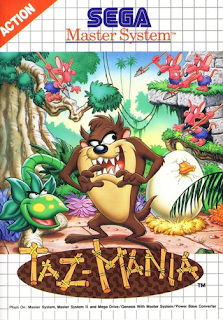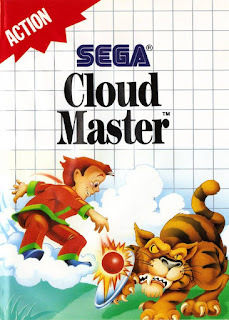Bienvenid@ al punto de venta online de SEGA Master System.
CONSOLAS
 |
| CONSOLA SEGA MASTER SYSTEM II + PAD + JUEGO EN MEMORIA. 22,08€ |
 |
| SEGA MASTER SYSTEM II ACEMARK EDITION. RESERVADA! |

ACCESORIOS
Accesorios, ordenados alfabéticamente.
 |
| PISTOLA SEGA LIGHT PHASER. |
VIDEOJUEGOS
Videojuegos disponibles a la venta, ordenados alfabéticamente.
#A
 |
| ACE OF ACES |
 |
| ACTION FIGHTER |
 |
| ADVANCED DUNGEONS & DRAGONS HEROES OF THE LANCE |
 |
| AFTER BURNER (PAL) |
 |
| AFTER BURNER (USA-NTSC) |
 |
| AIR RESCUE |
 |
| ALADDIN (SIMS, DISNEY, 1994) |
 |
| ALEX KIDD HIGH-TECH WORLD |
 |
| ALEX KIDD IN MIRACCLE WORLD |
 |
| ALIEN 3 (ARENA, PROBE SOFTWARE, ACCLAIM ENTERTAINMENT, CENTURY FOX, 1992) |
 |
| ALIEN SYNDROME (1988) |

 |
| ASTÉRIX AND THE GREAT RESCUE (CORE DESIGN, 1994) |
#B
#C
 |
| CALIFORNIA GAMES (EPYX, 1989) |
 |
| CALIFORNIA GAMES. PAL. COMPLETO. |
 |
| CALIFORNIA GAMES II |
 |
| CHOPLIFTER (1986) |
#D
#E
#F
#G
#H
#I
#J
#K
 |
| KRUSTY´S FUN HOUSE (FOX WILLIAMS, AUDIOGENIC, ACCLAIM, 1992) |
#M
#N
#L
#O
#P
#R
 |
| TENNIS ACE |
 |
| TENNIS ACE. PAL. COMPLETO. 10€ |
 |
| TAZ-MANIA (WARNER BROS INC., 1992) |
 |
| THE FLASH (PROBE ENTERTAINMENT, 1993) |
 |
| THE LION KING (DISNEY, VIRGIN INTERACTIVE, 1994) |
#U
#V
#W
#Y
#Z
REPRODUCCIONES / CLÓNICOS
#A
#B
#C
#D
#E
#F
#G
#H
#I
#J
#K
#M
#N
#L
#O
#P
#Q
#R
#S
#T
#U
#V
#W
#X
#Y
#Z
#
#
























No hay comentarios:
Publicar un comentario